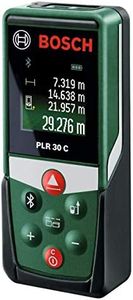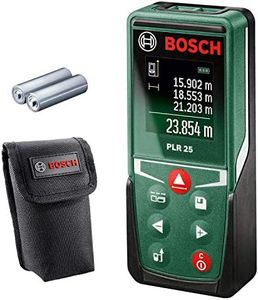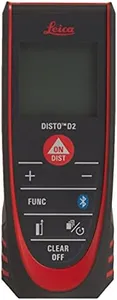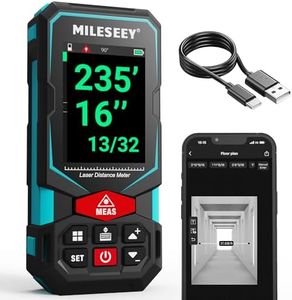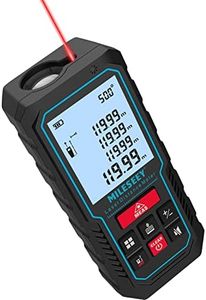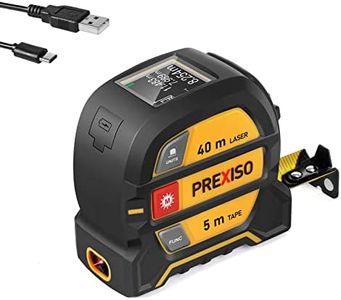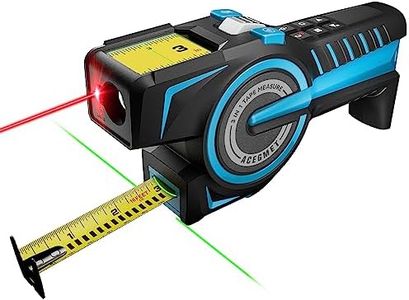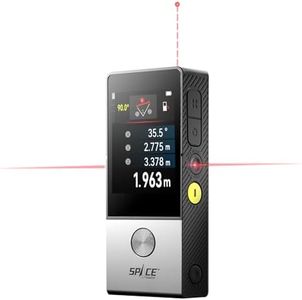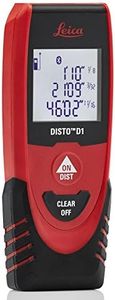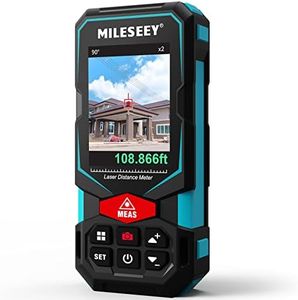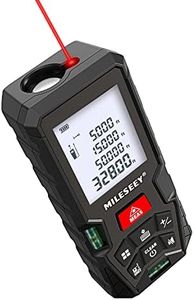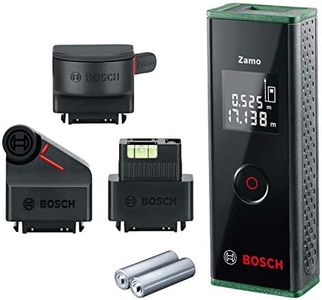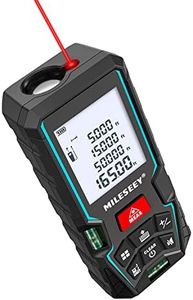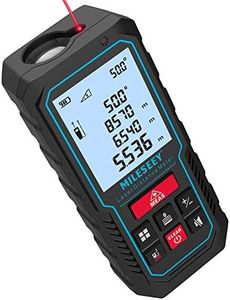We Use CookiesWe use cookies to enhance the security, performance,
functionality and for analytical and promotional activities. By continuing to browse this site you
are agreeing to our privacy policy
10 Best laser distance measures
From leading brands and best sellers available on the web.Buying Guide for the Best laser distance measures
Choosing a laser distance measurer can really simplify taking measurements for DIY projects, construction, interior design, and more. These handy devices use a laser beam to accurately determine the distance between you and a target surface. When shopping for one, consider the tasks you plan to use it for most often, the environments you'll be measuring in, and how much detail you need in your measurements. Getting familiar with the main specifications will help you match a device to your needs, so you'll make a choice that fits your projects and feels easy to use.Maximum Measuring RangeThis specification tells you how far the device can measure, often shown in meters or feet. It’s an important factor because it limits the types of spaces you can measure — for instance, a measure with a short range might be perfect for small rooms, but not large warehouses. Devices are typically grouped into short (up to 30 meters), medium (30–70 meters), and long range (over 70 meters). When deciding, think about the maximum distance you will ever need to measure. If you mostly work indoors or on smaller projects, a shorter range device is lightweight and easy to handle, while for large rooms or outdoor sites, you'll want something with a longer range.
AccuracyAccuracy indicates how closely the device’s reading matches the real distance. It’s usually expressed as a 'plus or minus' value (like ±1.5mm). High accuracy is crucial for tasks like furniture installation or floor planning, while more basic readings may be enough for rough estimates. Most devices offer different levels: standard accuracy (±2mm or higher), and high precision (less than ±1.5mm). Always match the level of precision to your needs; if your work requires exact fits, look for higher accuracy.
Measurement ModesLaser distance measures can offer various modes, such as continuous measurement, area and volume calculation, Pythagoras function (for indirect measurements), and addition/subtraction. Having more modes allows for flexibility in complex tasks, such as quickly calculating room size or ceiling height. Simpler models may offer fewer modes and are easier to use, while advanced options support complicated calculations. Choose based on the types of measurements you’ll be doing most; if you only want to check straight-line distances, basic modes suffice, but hands-on projects may benefit from advanced functions.
DisplayThe display is where you view your measurement results. It may vary in size, brightness, and ability to show multiple readings. Models with larger, backlit, or multi-line displays are easier to read in dim light or when tracking multiple measurements at once, which is helpful for detailed tasks. For simple, occasional use in good lighting, a basic display should be sufficient, but for frequent or professional use, a clearer and brighter screen adds comfort.
Durability and ProtectionThis covers the build quality and how well the device resists dust, water, and impact, often rated as IP54 or higher. If you use the measurer outdoors, on job sites, or in dusty or wet conditions, look for one with higher protection ratings and rugged casing. For home or office use, basic plastic models may perform well enough. Always match this to your working environment to avoid damage and ensure a longer lifespan.
Battery Life & Power SourceLaser distance measures are powered by batteries—either disposable or rechargeable. Battery life tells you how long you can use it before needing a recharge or replacement. Some devices use standard batteries for easy swaps, while others have built-in rechargeable cells. For infrequent use, regular batteries may suffice, but for daily or professional use, longer battery life or quick recharge features can make a big difference in convenience.
Size and PortabilityThe physical size and weight of the device impact how easy it is to carry and use. Smaller, lightweight models are better for quick jobs or tight spaces and fit easily in a pocket or tool belt, while larger devices could include more features but may be heavier. If you need to move around a lot or measure awkward spaces, compactness will be key.
Memory and ConnectivitySome laser distance measurers store previous readings and may connect to phones or computers via Bluetooth or other means. This makes it easier to keep track of multiple measurements or transfer data directly to design software. If you work with lots of numbers, plan complex renovations, or need easy digital tracking, this can be a valuable feature. For simple tasks, built-in memory or no connectivity might be all you need.
